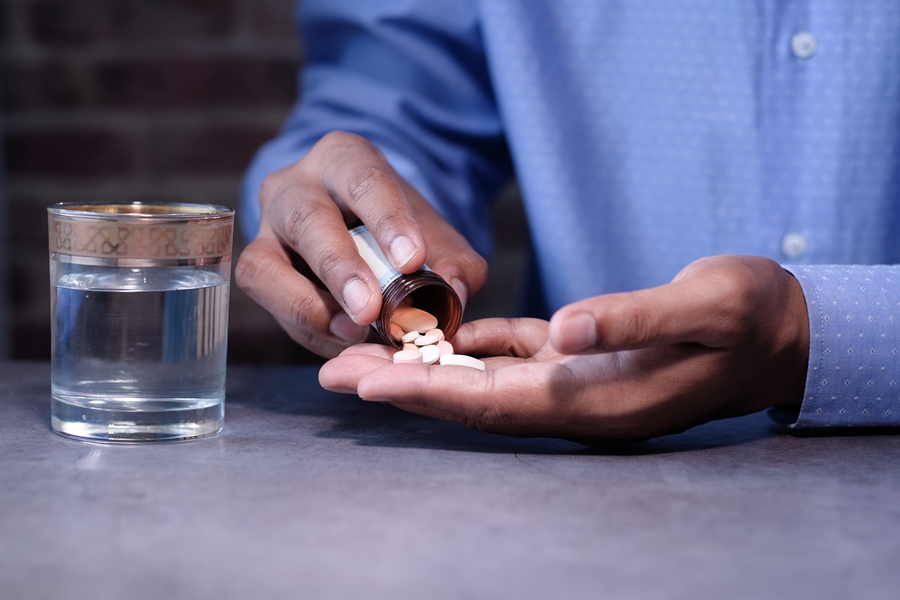If you have been taking opioids for chronic pain or have developed a dependence on prescription pain medication, stopping can feel almost impossible.
Not only does your body feel the need to continue using opioids to function each day, but there’s the fear of severe withdrawals that comes with going cold turkey.
This fear and dependency combo can keep individuals in a spiral of use, even when they want to break free from opioids for good. The good news is that there is a safe – and potentially more effective – alternative to going cold turkey.
A medically supervised opiate taper can gradually reduce your dosage while minimizing your discomfort. When done in a facilitated way, those who complete an opiate taper see increased chances of long-term abstinence and recovery.
What Is An Opiate Taper?
There’s an old adage that says consistency beats intensity. It’s true for almost any life-changing behavior, and especially for reducing your dependency on substances.
A safe opiate taper is a carefully planned, gradual reduction in opioid dosage that is designed to help your body adjust to lower levels of the drug slowly.
Rather than stopping abruptly (and experiencing potentially severe withdrawal symptoms), a taper helps your system recalibrate and recover to smaller and smaller doses – until none is needed to feel “normal.”
Opiate tapers are often conducted in a professionally supervised medical rehabilitation facility, where care teams can help you manage your experience and reduce discomfort through different treatments.
Why Taper over Going Cold Turkey?
Choosing to stop using opioids is a courageous, commendable decision. Not only are you helping your body return to its natural equilibrium, you’re taking back control of your life in a powerful way.
But how you approach stopping substance use can make a huge difference between long-term sobriety and dangerous complications.
Quitting Opioids “Cold Turkey”
Trying to simply stop using opioids (or any other addictive substance) altogether can trigger severe withdrawal symptoms that can be both physically uncomfortable and medically dangerous.
When you stop opioids after using them for months (or years), your body will go into a state of shock as it tries to adjust. The physical symptoms can range from muscle aches to severe nausea and vomiting, to high blood pressure and rapid heartbeat.
Typically, these symptoms can subside after 72 hours – but many find it difficult to make it that long without giving in and taking more opioids to reduce their sudden, severe symptoms. Add in mental symptoms such as anxiety, depression, or paranoia, and you can see why trying to stop cold turkey is incredibly difficult.
Research shows that those who attempt to stop using opioids cold turkey have much higher rates of relapse, and often return to their previous dosage levels quickly. This can increase the chances of deadly overdoses.
Why Do A Safe Opioid Taper?
Rather than trying to remove opiates from your life completely at once, the safer method is a slow opioid taper. This process requires more time and patience, but is shown to offer a much higher chance of success than more drastic measures.
A Gradual Opioid Taper Reduces Withdrawal Intensity
When you slowly reduce your dose over time, your body has a much better chance of adapting to the differences. This reduces the severity of withdrawal symptoms and allows you to come down the ladder of dosage need until you no longer need opioids to function.
Safe Opioid Tapers Help You Feel In Control
Stopping cold turkey can often leave you feeling anxious, depressed, paranoid, and exhausted. In essence, you’re trading one way of living out of control for another. A slow opioid taper alongside a medically-trained care team can help you work your way to recovery with a sense of control over your circumstances – which can greatly improve your chances for healing.
Gradual Tapers Improve Long-Term Success Rates
Studies show that gradual tapers from any substance abuse lead to better long-term outcomes. Those who try to stop cold turkey have been shown to have higher relapse rates, as well as higher risks for overdoses or abuse.\
Who Should Do A Gradual Opioid Taper?
Opioid use comes in all shapes and sizes, and some individuals may benefit from a gradual taper more than others. The more severe the addiction to opioids, the more likely it is that a gradual taper with medically supervised care teams will help.
Some of those who would most benefit from a safe, gradual taper from opioids include:
- People suffering from chronic pain. Individual who take opioids for chronic pain often find that they are dependent on opioids to maintain their quality of life.
- Long-term prescription opioid users who need tapering support. Those who began using opioids as part of a healing regimen years ago often find they struggle to stop – even after their treatment is done.
- Individuals who are using illicit opioids. Those addicted to drugs such as heroin or fentanyl will benefit from a gradual tapering as part of a more complex treatment process. A medically-assisted treatment (MAT) option, such as methadone or buprenorphine, may be used as an alternative to “street drugs” as part of a treatment process.
Why Medical Supervision Matters in Opioid Tapers
Attempting to slowly taper off of dependency can be incredibly difficult – and is often dangerous for those who may not be trained to manage the process properly. Seeking medically trained help for tapers is always the best method for staying safe in recovery.
Rehabilitation healthcare providers bring their expertise to bear on opioid tapers and can help you manage the symptoms effectively while you reduce dosage.
Plus, physicians and medical teams can help you dial down your dosage appropriately, helping you stay balanced between a lower dosage and reduced withdrawal symptoms.
As you taper, a team of medical experts can help monitor your health and well-being. Blood pressure checks, mental health check-ins, and counseling sessions can make sure you’re experiencing a holistic healing process, not just reducing usage.
If you want the best possible outcome, consider tapering from opioids at a detox center or rehabilitation clinic. Many offer 24/7 supervision and immediate access to supportive medications that can help you reduce your dependency safely.
How Long Is An Opioid Taper?
The length of time it takes to fully reduce and eliminate opioids from your system will vary depending on the individual. But most will follow either a slow or moderate pace based on the individual’s circumstances and response to the taper.
A slow opioid taper will see a reduction of opioid use by 5-20% per month. This is best for those with high levels of dependence, and gives the body plenty of time to adjust to each reduction.
Medium tapers may see up to 10% reductions each week, adjusted based on the individual’s response to the taper. Ultimately, the timeline will depend on the individual, their goals, and their healthcare team’s recommendations.
What Are The Medication-Assisted Options for Opioid Tapering?
To help reduce the severity of symptoms, many opioid tapers will include medication-assisted treatments that can replace illicit opioid use.
These can include methadone, suboxone (buprenorphine/naloxone), or buprenorphine – but must always be done in conjunction with supervised care in a treatment facility.
Using medications alongside tapering can help act as a temporary “bridge” in treatment, giving individuals a boost toward the next stage, especially when the withdrawal symptoms get severe.
When Should I Seek Immediate Help for Opioid Addiction?
While a gradual taper can help you slowly come down from opioid dependence, there are times when immediate withdrawal support is necessary.
If you have found that your opioid dependency is putting you or others at risk, or you find that you are unable to function as you would normally due to use, it may be time to seek immediate help.
If you feel that you may want to stop cold turkey, but are taking high levels of opioids, then working with a team who can guide you through the detoxification process is necessary, as trying to quit on your own can lead to devastating consequences.
When You’re Ready For Freedom, Genesis House Is Here For You
It is possible to find freedom from addiction to opioids, and with a safe, gradual taper, the chances of a full recovery are higher. The key is to find a team that can help you walk through each step of a taper effectively.
Here at Genesis House, we offer medically supervised detox and long-term support to help you heal.
Our professional opiate detox program offers individuals 24/7 medical supervision alongside a trained care team, and our residential addiction treatment programs offer total support for lasting recovery.
Want to learn more? Contact us today at 888-960-5121 to begin your recovery journey with the safety and support you deserve.
Research
- Pain Management Opioid Taper Decision Tool
- Oregon Opioid Tapering Guidelines
- Pocket Guide: Tapering Opioids for Chronic Pain
- Tapering and discontinuing opioid use / Minnesota Opioid Guidelines
- Best Practices, Research Gaps, and Future Priorities to Support Tapering Patients on Long-Term Opioid Therapy for Chronic Non-Cancer Pain in Outpatient Settings – NAM
- HHS Guide for Clinicians on the Appropriate Dosage Reduction or Discontinuation of Long-Term Opioid Analgesics
- Tapering off opioids: When and how – Mayo Clinic






